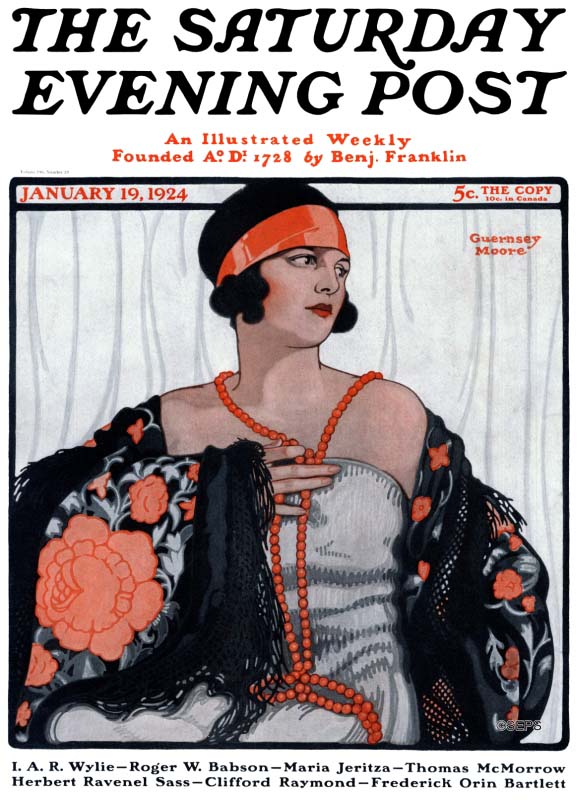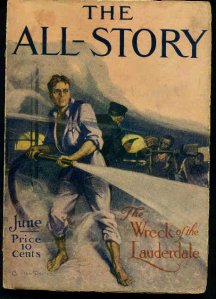|
Bagombo Snuff Box
''Bagombo Snuff Box'' is a collection of 23 short stories written by Kurt Vonnegut. The stories were originally published in US periodicals between 1950 and 1963, and consisted of virtually all of Vonnegut's previously published short fiction of the 1950s and 60s that had not been collected in 1968's ''Welcome to the Monkey House''. This collection was published in 1999 by G. P. Putnam's Sons. Vonnegut revised three stories for publication in this collection: "The Powder-Blue Dragon" (1954), "The Boy Who Hated Girls" (1956), and "Hal Irwin's Magic Lamp" (1957). The unrevised version of "Hal Irwin's Magic Lamp" was anthologized in '' Canary in a Cat House'' (1961). The final work in the collection, "Coda to My Career as a Writer for Periodicals", is an essay in which Vonnegut reflects on the writing of the stories in this collection, and the person he was at the time. The title story, "Bagombo Snuff Box", was adapted into a short film by Igor Stanojević. The film, called ''Čo ... [...More Info...] [...Related Items...] OR: [Wikipedia] [Google] [Baidu] |
Kurt Vonnegut
Kurt Vonnegut Jr. (November 11, 1922 – April 11, 2007) was an American writer known for his satirical and darkly humorous novels. In a career spanning over 50 years, he published fourteen novels, three short-story collections, five plays, and five nonfiction works; further collections have been published after his death. Born and raised in Indianapolis, Vonnegut attended Cornell University but withdrew in January 1943 and enlisted in the US Army. As part of his training, he studied mechanical engineering at the Carnegie Institute of Technology (now Carnegie Mellon University) and the University of Tennessee. He was then deployed to Europe to fight in World War II and was captured by the Germans during the Battle of the Bulge. He was interned in Dresden, where he survived the Allied bombing of the city in a meat locker of the slaughterhouse where he was imprisoned. After the war, he married Jane Marie Cox, with whom he had three children. He adopted his nephews after his sist ... [...More Info...] [...Related Items...] OR: [Wikipedia] [Google] [Baidu] |
The Saturday Evening Post
''The Saturday Evening Post'' is an American magazine, currently published six times a year. It was issued weekly under this title from 1897 until 1963, then every two weeks until 1969. From the 1920s to the 1960s, it was one of the most widely circulated and influential magazines within the American middle class, with fiction, non-fiction, cartoons and features that reached two million homes every week. The magazine declined in readership through the 1960s, and in 1969 ''The Saturday Evening Post'' folded for two years before being revived as a quarterly publication with an emphasis on medical articles in 1971. As of the late 2000s, ''The Saturday Evening Post'' is published six times a year by the Saturday Evening Post Society, which purchased the magazine in 1982. The magazine was redesigned in 2013. History Rise ''The Saturday Evening Post'' was first published in 1821 in the same printing shop at 53 Market Street in Philadelphia where the Benjamin Franklin-founded '' Penns ... [...More Info...] [...Related Items...] OR: [Wikipedia] [Google] [Baidu] |
Facts On File
Infobase Publishing is an American publisher of reference book titles and textbooks geared towards the North American library, secondary school, and university-level curriculum markets. Infobase operates a number of prominent imprints, including Facts On File, Films for the Humanities & Sciences, Cambridge Educational, Chelsea House (which also serves as the imprint for the special collection series, "Bloom's Literary Criticism" under the direction of literary critic Harold Bloom), and Ferguson Publishing. History The private equity firm Veronis Suhler Stevenson bought Facts on File and Chelsea House in 2005. Infobase bought Films for the Humanities & Sciences in 2007 and the '' World Almanac'' in 2009. In 2017, Infobase acquired The Mailbox lesson plans and ''Learning'' magazine. Veronis Suhler Stevenson sold Infobase to another private equity firm, Centre Lane Partners, in 2018. As well as nonfiction works in print, Infobase and its imprints publish a selection of works in ... [...More Info...] [...Related Items...] OR: [Wikipedia] [Google] [Baidu] |
Redbook
''Redbook'' is an American women's magazine that is published by the Hearst Corporation. It is one of the " Seven Sisters", a group of women's service magazines. It ceased print publication as of January 2019 and now operates an article-comprised website (redbookmag.com). History The magazine was first published in May 1903 as ''The Red Book Illustrated'' by Stumer, Rosenthal and Eckstein, a firm of Chicago retail merchants. The name was changed to ''The Red Book Magazine'' shortly thereafter. Its first editor, from 1903 to 1906, was Trumbull White, who wrote that the name was appropriate because, "Red is the color of cheerfulness, of brightness, of gaiety." In its early years, the magazine published short fiction by well-known authors, including many women writers, along with photographs of popular actresses and other women of note. Within two years the magazine had become a success, climbing to a circulation of 300,000. When White left to edit '' Appleton's Magazine'', he wa ... [...More Info...] [...Related Items...] OR: [Wikipedia] [Google] [Baidu] |
Worlds Of If
''If'' was an American science fiction magazine launched in March 1952 by Quinn Publications, owned by James L. Quinn. The magazine was moderately successful, though for most of its run it was not considered to be in the first tier of American science fiction magazines. It achieved its greatest success under editor Frederik Pohl, winning the Hugo Award for best professional magazine three years running from 1966 to 1968. ''If'' published many award-winning stories over its 22 years, including Robert A. Heinlein's novel ''The Moon Is a Harsh Mistress'' and Harlan Ellison's short story "I Have No Mouth and I Must Scream". The most prominent writer to make his first sale to ''If'' was Larry Niven, whose story "The Coldest Place" appeared in the December 1964 issue. ''If'' was merged into ''Galaxy Science Fiction'' after the December 1974 issue, its 175th issue overall. Publication history Although science fiction had been published in the United States before the 1920s, it di ... [...More Info...] [...Related Items...] OR: [Wikipedia] [Google] [Baidu] |
2 B R 0 2 B
"2 B R 0 2 B" is a science fiction short story by Kurt Vonnegut, originally published in the digest magazine ''Worlds of If Science Fiction'' for January 1962, and collected in Vonnegut's ''Bagombo Snuff Box'' (1999). The title is pronounced "2 B R naught 2 B" and references the famous phrase "to be, or not to be" from William Shakespeare's ''Hamlet''. In the story, the title refers to the telephone number that one dials to schedule an assisted suicide with the Federal Bureau of Termination. Vonnegut's 1965 novel ''God Bless You, Mr. Rosewater'' describes a story by the name and attributes it to his recurring character Kilgore Trout, but the plot summary given is closer in nature to the eponymous tale from Vonnegut's short-story collection ''Welcome to the Monkey House''. Plot summary The setting is a society in which aging has been cured, individuals have indefinite lifespans, and population control is used to limit the population of the United States to forty million, a num ... [...More Info...] [...Related Items...] OR: [Wikipedia] [Google] [Baidu] |
The Atlantic Monthly
''The Atlantic'' is an American magazine and multi-platform publisher. It features articles in the fields of politics, foreign affairs, business and the economy, culture and the arts, technology, and science. It was founded in 1857 in Boston, as ''The Atlantic Monthly'', a literary and cultural magazine that published leading writers' commentary on education, the abolition of slavery, and other major political issues of that time. Its founders included Francis H. Underwood and prominent writers Ralph Waldo Emerson, Oliver Wendell Holmes Sr., Henry Wadsworth Longfellow, Harriet Beecher Stowe, and John Greenleaf Whittier. James Russell Lowell was its first editor. In addition, ''The Atlantic Monthly Almanac'' was an annual almanac published for ''Atlantic Monthly'' readers during the 19th and 20th centuries. A change of name was not officially announced when the format first changed from a strict monthly (appearing 12 times a year) to a slightly lower frequency. It was a mon ... [...More Info...] [...Related Items...] OR: [Wikipedia] [Google] [Baidu] |
Cosmopolitan (magazine)
''Cosmopolitan'' is an American monthly fashion and entertainment magazine for women, first published based in New York City in March 1886 as a family magazine; it was later transformed into a literary magazine and, since 1965, has become a women's magazine. ''Cosmopolitan'' is one of the best-selling magazines and is directed mainly towards a female audience. Jessica Pels is the magazine's current editor-in-chief. Formerly titled ''The Cosmopolitan'' and often referred to as ''Cosmo'', throughout the years, ''Cosmopolitan'' has adapted its style and content. Its current incarnation was originally marketed as a woman's fashion magazine with articles on home, family, and cooking. Eventually, editor-in-chief Helen Gurley Brown changed its attention to more of a women empowerment magazine. Nowadays, its content includes articles discussing relationships, sex, health, careers, self-improvement, celebrities, fashion, horoscopes, and beauty. ''Cosmopolitan'' is published by New York ... [...More Info...] [...Related Items...] OR: [Wikipedia] [Google] [Baidu] |
Cape Cod Compass
A cape is a clothing accessory or a sleeveless outer garment which drapes the wearer's back, arms, and chest, and connects at the neck. History Capes were common in medieval Europe, especially when combined with a hood in the chaperon. They have had periodic returns to fashion - for example, in nineteenth-century Europe. Roman Catholic clergy wear a type of cape known as a ferraiolo, which is worn for formal events outside a ritualistic context. The cope is a liturgical vestment in the form of a cape. Capes are often highly decorated with elaborate embroidery. Capes remain in regular use as rainwear in various military units and police forces, in France for example. A gas cape was a voluminous military garment designed to give rain protection to someone wearing the bulky gas masks used in twentieth-century wars. Rich noblemen and elite warriors of the Aztec Empire would wear a tilmàtli; a Mesoamerican cloak/cape used as a symbol of their upper status. Cloth and c ... [...More Info...] [...Related Items...] OR: [Wikipedia] [Google] [Baidu] |
Argosy (magazine)
''Argosy'', later titled ''The Argosy'', ''Argosy All-Story Weekly'' and ''The New Golden Argosy'', was an American pulp magazine from 1882 through 1978, published by Frank Munsey until its sale to Popular Publications in 1942. It is the first American pulp magazine. The magazine began as a children's weekly story–paper entitled ''The Golden Argosy''. In the era before the Second World War, ''Argosy'' was regarded as one of the "Big Four" pulp magazines (along with '' Blue Book'', ''Adventure'' and '' Short Stories''), the most prestigious publications in the pulp market, that many pulp magazine writers aspired to publish in. Lee Server, ''Danger Is My Business: an illustrated history of the Fabulous Pulp Magazines''. San Francisco: Chronicle Books. (1993) (pp. 22-6, 50) John Clute, discussing the American pulp magazines in the first two decades of the twentieth century, has described ''The Argosy'' and its companion ''The All-Story'' as "the most important pulps of their er ... [...More Info...] [...Related Items...] OR: [Wikipedia] [Google] [Baidu] |
The Package (short Story)
''The Package'' is a short story by Kurt Vonnegut, first published on 26 July 19, 1952 in '' Collier's weekly'', and later in '' Bagombo Snuff Box'' in 1999. Plot The story concerns very successful retired businessman Earl Fenton and his wife, who worked their entire lives to get where they are. The day they return from a trip around the world and move into their brand new house with all the modern conveniences, an old friend from college, Charlie, arrives in town and calls from a local hotel. He has come into town to visit Fenton. The two went to college, where Charlie was one of the rich kids, while Fenton had to work hard, in looking back on the time Fenton perceived that his need to work his way through college made him a "second class" person in his fraternity, but when questioned by his wife could not remember any specific things that the "rich" fraternity brothers said or did. Now Fenton, who is very proud of what he has accomplished in his life, wants to show this to his fo ... [...More Info...] [...Related Items...] OR: [Wikipedia] [Google] [Baidu] |
Short Stories
A short story is a piece of prose fiction that typically can be read in one sitting and focuses on a self-contained incident or series of linked incidents, with the intent of evoking a single effect or mood. The short story is one of the oldest types of literature and has existed in the form of legends, mythic tales, folk tales, fairy tales, tall tales, fables and anecdotes in various ancient communities around the world. The modern short story developed in the early 19th century. Definition The short story is a crafted form in its own right. Short stories make use of plot, resonance, and other dynamic components as in a novel, but typically to a lesser degree. While the short story is largely distinct from the novel A novel is a relatively long work of narrative fiction, typically written in prose and published as a book. The present English word for a long work of prose fiction derives from the for "new", "news", or "short story of something new", itsel ... or novell ... [...More Info...] [...Related Items...] OR: [Wikipedia] [Google] [Baidu] |






